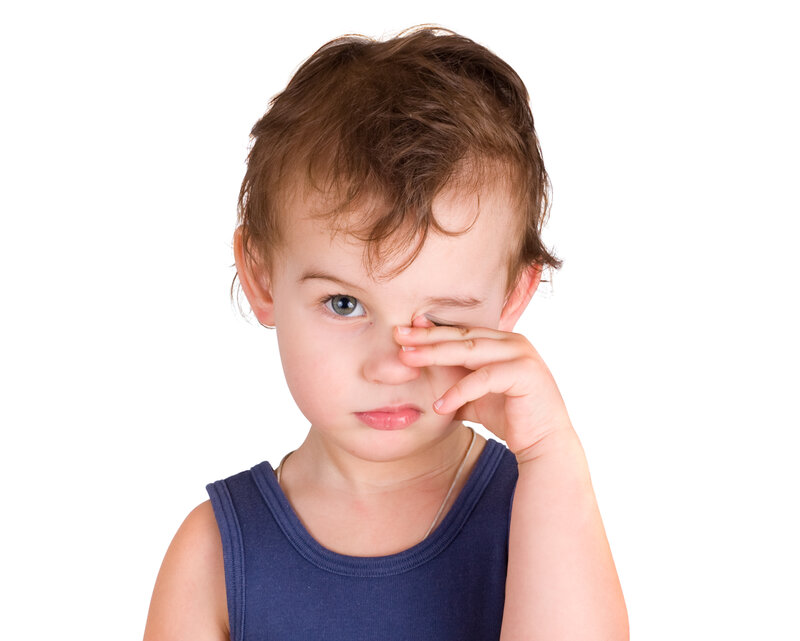10 Common Causes Of Eye Pain

Irritated, uncomfortable, or painful eyes are impossible to ignore. And, as family eye doctors, we’re glad that is the case. Eye pain and discomfort without an apparent cause, or pain/discomfort that lasts longer than a couple of days or is associated with other symptoms, should always be examined by an optometrist.
10 Reasons Your Eyes Hurt
Here are ten of the most common reasons why your eyes sting, burn, ache, or are otherwise uncomfortable.
Allergies causing eye pain
Peak allergy season, or any environmental allergies patients have, can wreak havoc on the eyes. What starts as redness, irritating, itching, or burning can wind up resulting in perpetually painful eyes. That’s especially true for those who haven’t found a way to manage their allergies or are guilty of over rubbing their eyes, which makes the eyelids tender and can cause the eyeballs to feel extra sensitive or even bruised over time.
Work with your physician to find the best allergy management and treatment plan for you. Different people respond better to one thing over another, so you may have to try various things before you land on the perfect solution. We also recommend flushing your eyes regularly with a non-preservative eye drop solution and avoid rubbing your eyes as much as possible.
A stye
Sometimes, the glands in or right below the lash line become infected. Similar to a pimple or boil, styes are red, swollen, and tender to the touch. You may even see a whitehead or spot where the infection is trying to work its way out.
The more you rub or touch a stye, the more tender it becomes. Most styes go away on their own within a few days to a week or so. Applying warm compresses several times a day helps to relieve tenderness and swelling. Never pop a stye as it can damage the sensitive lid/eye tissue.
Conjunctivitis and other eye infections
Conjunctivitis, also called “pink eye,” is one of the most common causes of irritated or painful eyes. While allergies can contribute to conjunctivitis, the actual infection takes place in the conjunctiva - the mucous membrane that lines the eye and the inner eyelids. Most infections are either viral or bacterial, and proper diagnosis is key to ensuring you get the right drops. You cannot treat a viral infection with anti-bacterial drops and vice versa.
Other eye infections also cause painful eyes. Examples include:
- Keratitis. This is an infection of the cornea. Usually, keratitis follows an eye injury or unsafe use of contact lenses. Only use contact lens-specific solutions to clean your lenses and never wear contacts when swimming in any body of water, including pools or hot tubs.
- Uveitis. This is an infection in the middle layer of eye tissue. Damage in this area of the eye can be dangerous and can lead to blindness.
- Optic neuritis. Swelling of the optic nerve is painful and can be caused by autoimmune disorders or by viruses such as measles, mumps, or even a bad bout of the flu.
Cellulitis
Like a stye, cellulitis is an infection that takes place in the tissue underneath the skin. If cellulitis affects the tissue around the eye - such as the brow/forehead, upper cheek, or a lid - the result can be incredibly uncomfortable and the eye may hurt from surrounding inflammation. Sometimes cellulitis can affect the eyelid (preseptal) or the eye socket (orbital). Cellulitis close to the eye should be examined and treated by your physician or an optometrist.
Corneal abrasion
The cornea is the outermost lens of the eye. If it is scratched, it becomes almost unbearably uncomfortable. You’ll feel like there’s a foreign object in your eye, even if there isn’t one. With proper care, corneal abrasions typically heal quickly within three days.
Corneal laceration
This is a deeper and more severe version of a corneal abrasion. A corneal laceration usually occurs when a sharp object scrapes across the eye’s surface or from direct eye trauma. This is considered a serious eye injury and needs immediate emergency attention.
Cover the affected eye with a patch until it can be examined. If the object is still lodged in the eye, tape a small paper cup to your head - protecting the impaled object from being pushed deeper into the eye - until you get to urgent care or your optometrist’s office.
Foreign objects
You’re familiar with the extreme irritation something as small as an eyelash can cause if it gets stuck on the eye’s surface. Pain and discomfort are almost always associated with any foreign objects trapped in the eye, especially if they penetrate the eye.
While some smaller objects are okay to flush and take a “watch and wait” approach,” others require immediate medical attention or an emergency call or visit to your optometrist. Read, Removal of Foreign Objects From the Eye: DIY or Eye Doctor to learn more.
Dry eye
Cases of dry eye are increasingly more common due to our culture’s frequent use of screens. Chronic dry eye can cause painful eyes and can result in corneal ulcers, acute infections that can form if dry eye isn’t managed or treated correctly. Other risk factors for dry eye include wearing contact lenses, taking certain medications, and air conditioning.
Glaucoma
The eye relies on interior fluid pressure to maintain its firm, spherical shape. Sometimes, too much fluid accumulates in the front of the eye. We call this condition glaucoma. While one type of glaucoma rarely causes pain, angle-closure glaucoma can cause pain. Left undiagnosed and untreated, both forms of glaucoma damage the optic nerve and lead to permanent vision loss or blindness.
Sinusitis
The eyes connect to the sinus cavity, so any infection inside the sinuses (sinusitis) can also cause tenderness or an aching/throbbing pain in the eye or the eye socket. Treating sinusitis will relieve the pressure on the eye socket and should alleviate eye pain or discomfort.
Accurate Diagnosis Is Essential To End Common Causes Of Eye Pain
Any eye pain that doesn’t have an obvious source or that doesn’t go away on its own should be examined by an optometrist. Schedule an appointment at Eye to Eye Family Vision Care, where our doctors and staff take excellent care of patients from age one to age 101. Contact us to schedule your visit. 918-227-3937.

